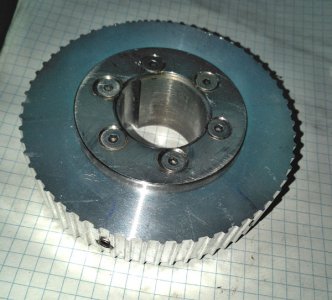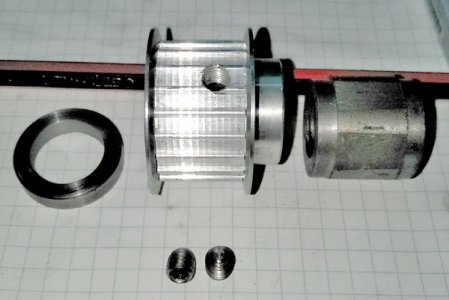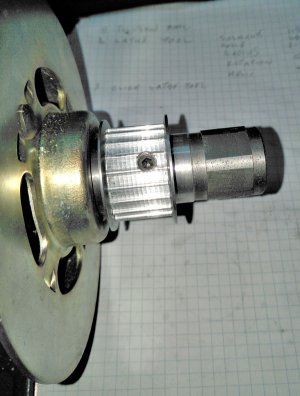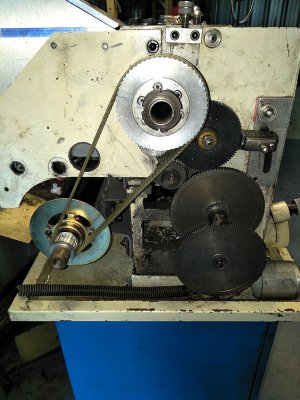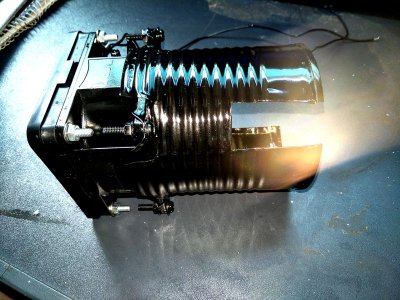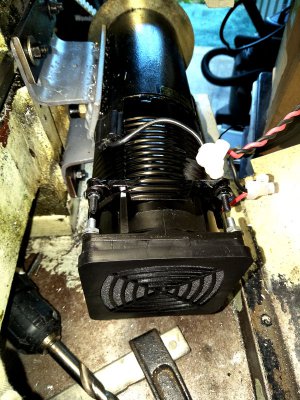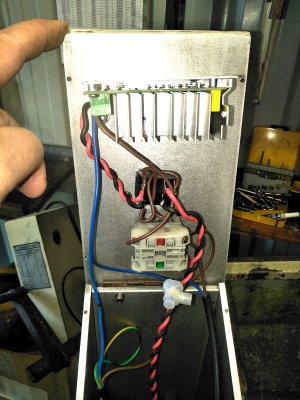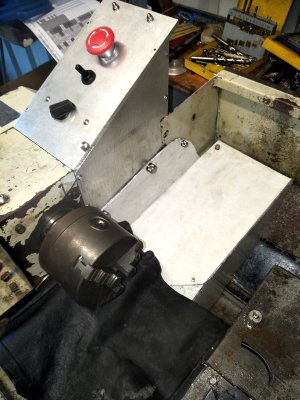- Joined
- Aug 22, 2012
- Messages
- 4,126
I started making the keyway with a narrow cutter but that became very tedious so I changed to an 8mm wide.
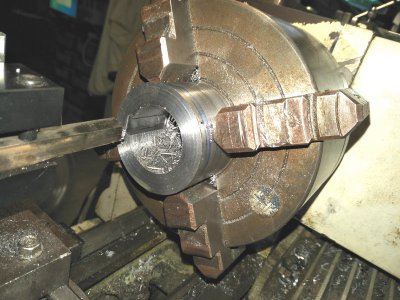
Sliding the carriage back and forth untill I got it 3mm deep, So little was removed on each stroke it took 2 afternoons.
I checked it on the spindle and it was a perfect fit. BUT two days and rust started forming inside, gah!
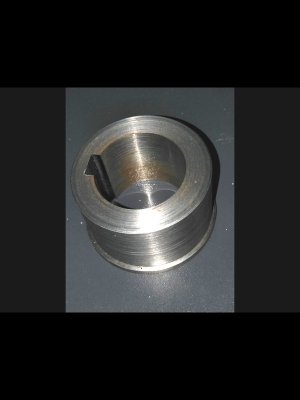
Then I bored out the cogged pulley to fit, that was way easier.
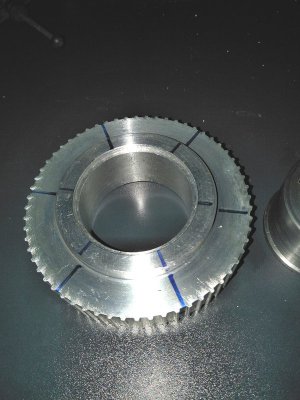
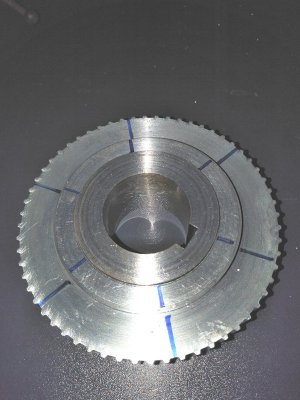
Now I have to drill six 3/16" holes for the balls where the blue lines are then drill 5mm and tap M6x1 for the grub screws and springs.
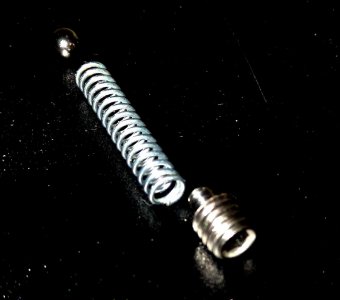
I turned a little spigot to centre the spring on the grub screw.
I made a quick test piece to check the spring pressure and if the ball would rise and slip.
At the highest pressure it was immovable, at the lowest it was difficult but did slip.
appologies for the crap photos as I'm coming to grips with a new image processing program.
edit - I forgot to mention the chuck was locked when broaching the keyway.

Sliding the carriage back and forth untill I got it 3mm deep, So little was removed on each stroke it took 2 afternoons.
I checked it on the spindle and it was a perfect fit. BUT two days and rust started forming inside, gah!

Then I bored out the cogged pulley to fit, that was way easier.


Now I have to drill six 3/16" holes for the balls where the blue lines are then drill 5mm and tap M6x1 for the grub screws and springs.

I turned a little spigot to centre the spring on the grub screw.
I made a quick test piece to check the spring pressure and if the ball would rise and slip.
At the highest pressure it was immovable, at the lowest it was difficult but did slip.
appologies for the crap photos as I'm coming to grips with a new image processing program.
edit - I forgot to mention the chuck was locked when broaching the keyway.
Last edited:


